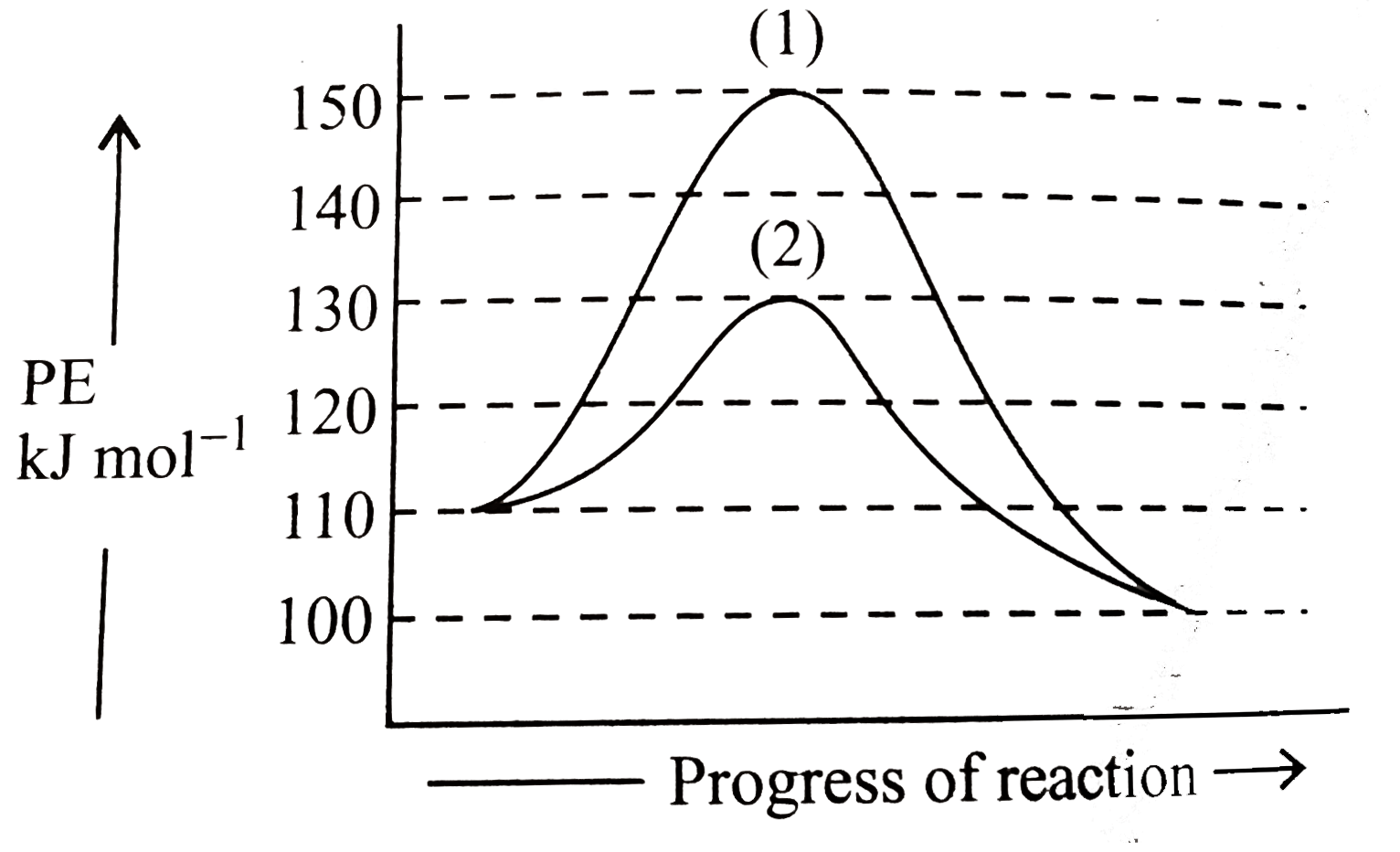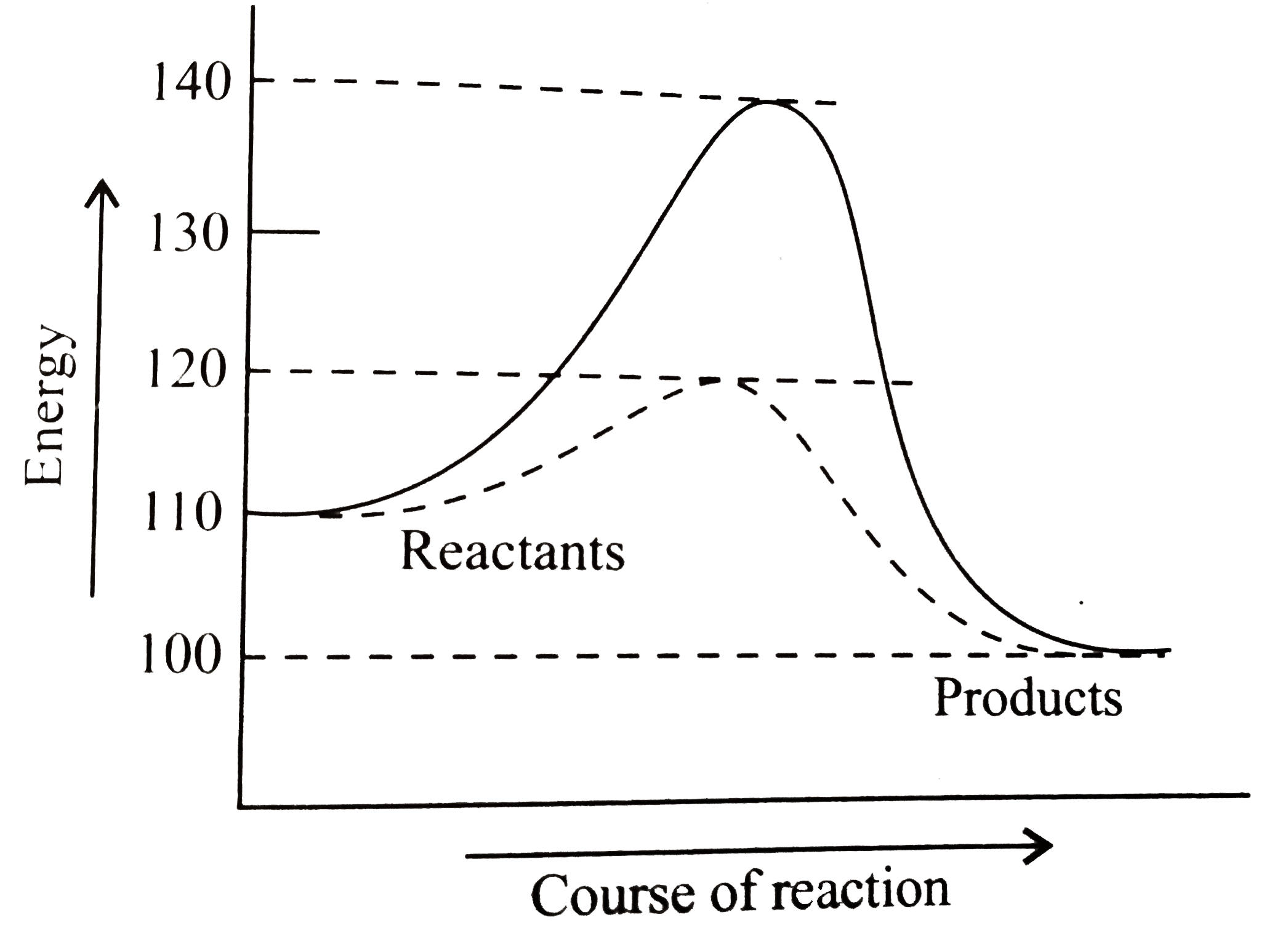In the presence of catalyst the energy of activation is ..........and hence greater number of molecules change over to products there by increasing the rate of the reaction.
lowered
Topper's Solved these Questions
- CHEMICAL KINETICSBOOK - FULL MARKSCHAPTER - CHEMICAL KINETICSEXERCISE - ADDITIONAL QUESTIONS (III. MATCH THE FOLLOWING )
4 Videos
- CHEMICAL KINETICSBOOK - FULL MARKSCHAPTER - CHEMICAL KINETICSEXERCISE - ADDITIONAL QUESTIONS (IV. ASSERTION AND REASON)
8 Videos
- CHEMICAL KINETICSBOOK - FULL MARKSCHAPTER - CHEMICAL KINETICSEXERCISE - ADDITIONAL QUESTIONS (I. CHOOSE THE CORRECT ANSWER)
50 Videos
- CARBONYL COMPOUNDSBOOK - FULL MARKSCHAPTER - CARBONYL COMPOUNDSEXERCISE - ADDITIONAL QUESTIONS (5 MARKS QUESTIONS)
34 Videos
- CHEMISTRY IN EVERYDAY LIFE BOOK - FULL MARKSCHAPTER - CHEMISTRY IN EVERYDAY LIFE EXERCISE - ADDITIONAL QUESTION ( 5 Mark Questions )
2 Videos
Similar Questions
Due to the presence of catalyst the rate of reaction changes.
View SolutionFrom the given figure:
i) Calculate ΔE for the reaction and energy of activation for the forward reaction and energy of activation for the backward reaction.
ii) The dotted curve is in the presence of a catalyst, what is the energy of activation for the two reactions in the presence of the catalyst?
iii) will the catalyst change the extent of the reaction?

View Solution
Knowledge Check
Consider the reaction
A→2B+C,ΔH=−15kcal. The energy of activation of backward reaction is 20kcalmol−1. In presence of catalyst, the energy of activation of forward reaction is 3kcalmol−1.At 400 K the catalyst causes the rate of the forward reaction to increase by the number of times equal to -Ae3.5Be2.5Ce−2.5De2.303Consider the reaction
A→2B+C,ΔH=−15kcal. The energy of activation of backward reaction is 20kcalmol−1. In presence of catalyst, the energy of activation of forward reaction is 3kcalmol−1.At 400 K the catalystcauses the rate of the forward reaction to increase by the number of times equal to -Ae3.5Be2.5Ce−2.5De−2.303
Given the following graph.
(a) Calculate ΔH for the reaction and energy of activation for the forward and backward reaction.

(b) Curve (2) is the energy profile in the presence of a catalyst. What is the energy of activation for the two reaction in the presence of a catalyst?
( c) Will the catalyst change the extent of the reaction?
View SolutionA poistive catalyst increases the activation energy of the reaction.
View SolutionA poistive catalyst increases the activation energy of the reaction.
View SolutionRefer picture given below.
(a) Calculate ΔH for the reaction and the energy of activation for the forward reaction as well as backward reaction.
(b) The dotted curve is in the presence of a catalyst. What is the energy of activation for the two reactions in the presence of catalyst?
( c) Will the catalyst change the extent of reaction?

View SolutionRefer picture given below.
(a) Calculate ΔH for the reaction and the energy of activation for the forward reaction as well as backward reaction.
(b) The dotted curve is in the presence of a catalyst. What is the energy of activation for the two reactions in the presence of catalyst?
( c) Will the catalyst change the extent of reaction?

View SolutionThe major product of the following reaction is:

View Solution
